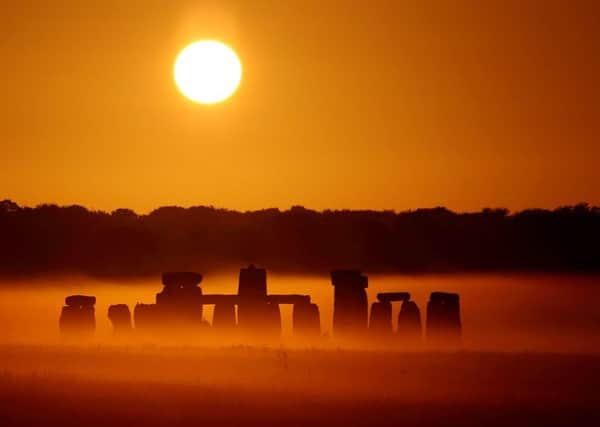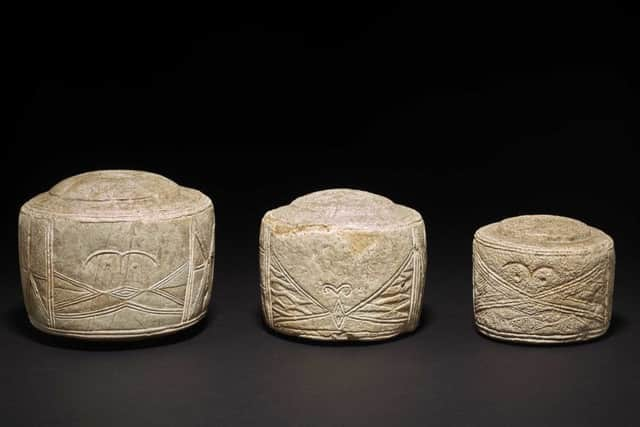Stone Age instruments unearthed in Yorkshire go back to Stonehenge for timely transcontinental exposé


It was in 1889 that the priest and amateur archaeologist William Greenwell opened a burial mound at Folkton, a few miles inland from Filey, and discovered a Neolithic grave as old as Stonehenge.
Inside, beside a child’s body, had been placed three drums, hewn from the local chalk stone and carved with decorations of stylised human faces and geometric patterns.
Advertisement
Hide AdAdvertisement
Hide AdGreenwell donated them to the British Museum. Today, at Stonehenge itself, they are among the artefacts in an exhibition that chronicles the way our ancestors, much like ourselves, fell in and out of love with continental Europe.


Other objects on show include a 6,500-year-old polished jade axe and an elaborate gold neck piece from some 4,000 years ago.
English Heritage, which has organised the event, says the exhibits betray contrasting periods of connection with and relative isolation from Europe.
The early Neolithic period saw mass migrations the first farmers and the earliest metal workers. By the time Stonehenge was being built, communities were travelling from Orkney to the south coast, but there was little or no communication with the continent.
Advertisement
Hide AdAdvertisement
Hide AdLater came another early Common Market – the Beaker culture that brought Bronze Age technology to these shores 4,500 years ago was part of a migration that almost completely replaced the communities of Britain in just a few centuries.
Susan Greaney, a historian with English Heritage, said: “From insular communities with what appears to be little outside communication, to mass migrations and the sharing of raw materials and finished artefacts, our ancestors have been making and breaking relationships with Continental Europe for thousands of years.
“Stonehenge stood at the centre of this constantly changing ebb and flow of objects, styles, people and ideas.”
She said the style of the decorations on Greenwell’s Folkton Drums was familiar from megalithic pottery across Britain but not further afield.
Advertisement
Hide AdAdvertisement
Hide AdNeil Wilkin, a curator at the British Museum, said: “To be able to bring all these objects together for the first time at Stonehenge, one of the most important symbols of ancient Britain, is an exciting prospect.”
Neolithic and Bronze Age objects from the museum’s collections are displayed alongside artefacts borrowed from other lenders, including a Langdale axe from Wiltshire Museum, two carved chalk plaques from Salisbury Museum, and a Grooved Ware pot from Down Farm Museum in Dorset.
A copper alloy “sun disc” dating from 1500 to 1300 BC and recently discovered in the museum’s store, is thought to be part of a model chariot pulled by a divine horse. It is going on display for the first time in living memory.